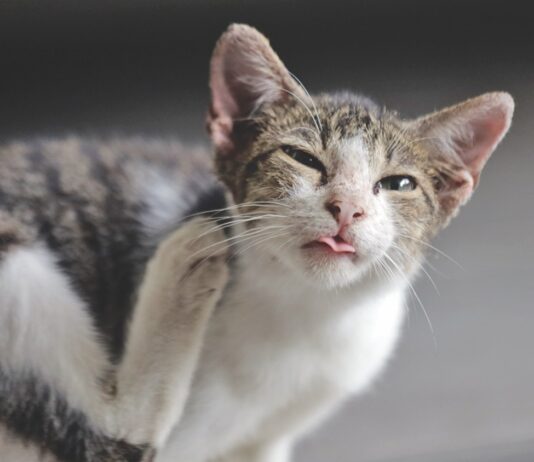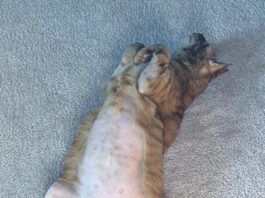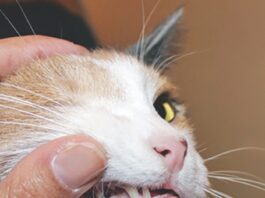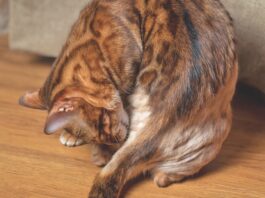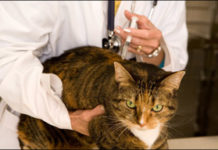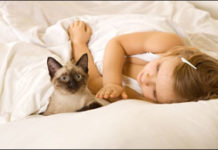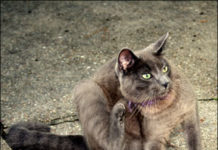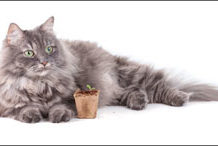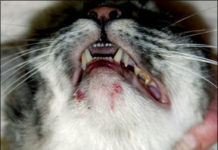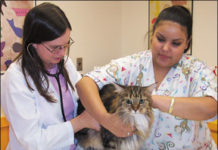Ask Elizabeth: November 2010
Dear Elizabeth, I cant believe Im writing this, but we have bed bugs in our home. We recently vacationed in Europe, and evidently brought home some unwanted hitchhikers. I thought only low rent motels were a source of bed bugs, but we stayed at beautiful, exclusive hotels, and now I find myself wondering what went wrong.Weve hired a licensed exterminator and will move out of our home when the exterminator is using pesticides in the house, but Im concerned for our cats. Should we move them out too and, if so, is there any risk of the bed bugs hitching a ride on the cats?
Nasal Disease: Understand the Signs
Does your cat have a bad case of the sniffles? Its probably nothing to worry about. Just like you, your cat is apt to come down with a minor respiratory infection now and then, and it will pass. But if the runny nose that persists for more than a few days - and especially if the secretions thicken and become darker in color - you should take your pet to the veterinarian for an examination.
Diagnosis: Feline Food Allergies
Its always been a priority to feed your cat the most nutritious diet available, even if that means paying more for premium cat food. But even the best of foods can contain an ingredient to which she has developed an allergy. If thats the case, youre likely to witness a change in your cats behavior and health. Most noticeably, shes likely to be bothered by intermittent or constant itching.
Feline Respiratory Infections
Your best friends cat always seems to be ill. During your occasional visits to her home, the cat is often wheezing, sneezing and coughing. Her eyes are red and watery, and she acts lethargic. Your friend says that these signs tend to persist for a week or so - but then she seems to be all right again for a while. Its quite likely that the cat is suffering from a deeply rooted upper respiratory infection, a highly contagious disease affecting her nose, sinuses, pharynx and larynx - the structures that filter, heat and dehumidify inhaled air before it flows to her lungs.
Ask Elizabeth: April 2010
Is it really possible that my cat has acne? Crumbcake is a handsome, slightly chubby, brown tabby cat who we adopted from the SPCA five years ago. He has always been quite healthy; we take him to our veterinarian every year for his check-up, and we havent had any worries about him. Imagine our shock when at this years examination, our veterinarian diagnosed "chin acne" on our cat! Crumbcakes chin is a little swollen, a little red, and he has a number of what look like blackheads along the edge of his lower lips.
Ask Elizabeth: March 2010
Sometimes, I find things which appear to be grains of rice stuck to the fur around my cats hind end. Figaro does go outside, but I cant figure out how he could get rice stuck back there. Do you think hes been rooting around in garbage cans looking for food?
Indoor Allergies and Your Cat
Though outdoor allergens (substances that can cause the immune system to respond with an allergic reaction), such as pollen, are considered to be the main culprits in causing allergies, indoor allergens, such as the common house dust mite, actually have the potential to be much more reactive. As humans, we generally have the most difficult time with indoor allergens when they are airborne and are inhaled into our upper respiratory tract. Though we consider our feline pets to be members of the family, most cats do not respond to airborne particles with an allergic reaction in the respiratory tract - unless the cat is asthmatic, notes William H. Miller, VMD, professor of medicine, chief of the section of dermatology, and medical director of Cornells Companion Animal Hospital.
The Challenge of Skin Disorders
One of your favorite things about your cat is her sleek, shining fur. Lately, though, it seems like your cat has been having a bad fur day. Nothing can be more frustrating and annoying than skin disorders. Nutritional deficiencies or food hypersensitivity; parasites; fungal, viral and bacterial infections; and environmental allergens can cause problems that range from dry, brittle hair and coat to baldness and open wounds. "Most skin diseases are simple and straightforward," says William Miller, Jr., VMD, professor of dermatology at Cornell Universitys College of Veterinary Medicine, "and common problems such as flea bite allergies, abscesses (see related article in this issue) and ear mites are easily recognized, treated and resolved." If a cat can absorb the nutrients in food and is being fed a nutritionally complete diet, food is probably not the cause of the skin problem. If a cat has abnormal absorption or a gastrointestinal disease, or is being fed nutritionally inadequate home-cooked food or unbalanced "people" food, the problem may show up either as vomiting or diarrhea or as skin disease. "We dont usually see both," says Dr. Miller. The more esoteric causes of skin disorders are allergies, and they may require some investigative work to uncover. "From a dermatologic point of view, we see allergic reactions more often than other skin problems," says Dr. Miller. "And you cant always tell if the allergy is to food, drugs, pollen or other sources."
Why Is Your Cat Coughing?
A wide variety of irritants from minor and transient to severe and indicative of a major health problem can affect any portion of the feline respiratory system, whose purpose is to warm and humidify inhaled air, deliver oxygen to the lungs, and expel carbon dioxide and other waste gases. A complex pathway of tracts and organs, the upper respiratory system consists of the nose; two nasal passages; the nasal cavity (a hollow structure surrounded by air-filled spaces that are situated just above and below the eyes); and the pharynx (a cavity behind the mouth) that opens, via a passageway called the larynx; to a tubular structure, the trachea, a flexible tube commonly referred to as the windpipe.
Protect Your Plants and Keep Kitty Happy: Grow Grass Indoors
Everyone knows that cats are carnivores. So why does your cat keep snacking on the houseplants? Some experts say greens help cats get rid of hairballs, others that cats crave the fiber and moisture. There may be a nutritional component as well: when feeding on prey, a cat will eat the intestines first, where its likely to find plant matter. But regardless of the reason for the craving, plants can prove a serious danger to cats. Many common houseplants, such as lilies, asparagus ferns, and foxglove, are poisonous. Outdoors, a cat may eat grass or other plants contaminated by pesticides and fertilizer.
Acne: All Cats Are at Risk
Despite its typical durability, a cats skin is subject to a wide array of disorders. Most of these conditions, in themselves, are of minor consequence and readily treatable. But all of them merit examination by a veterinarian, since they can signal the presence of a serious infection or other potentially life threatening systemic health problem. Among the various feline skin conditions that might be overlooked - or ignored - by an owner is acne. This disorder, characterized by the emergence of tiny black eruptions (blackheads) on a cats chin and lips, is a condition that can afflict both male and female cats of all ages and breeds. The presence of blackheads usually amounts to nothing more than a cosmetic problem, says William H. Miller, Jr., VMD, a professor of dermatology and medical director of the Companion Animal Hospital at Cornell Universitys College of Veterinary Medicine. However, he points out, feline acne - which appears only on an affected cats face - can evolve into a serious health issue if the benign blackheads turn into pus-filled boils (furuncles) that may signal the presence of a deep-seated bacterial or fungal infection.
Understand Skin Disorders
The function of your cats skin extends well beyond its role as the matrix for the animals lustrous haircoat. In a healthy feline, the skin also works, for example, as a barrier against invasion by harmful microorganisms. It serves as a watertight seal, retaining an animals body fluids and preventing dehydration. And it insulates an animals internal organs against the outside worlds extremes of heat and cold. Despite its normally durable structure, however, every cats skin is subject to a wide array of disorders, most of which are minor and readily treatable. But some untreated skin conditions can rapidly progress to a serious, even lethal, stage, with systemic implications. Considering the dangerous potential of virtually any untreated skin condition, William H. Miller Jr., VMD, a professor of dermatology at Cornell Universitys College of Veterinary Medicine, strongly urges cat owners to practice what he terms "preventive maintenance." Keep an eye out, he advises, for any suspicious scratching or hair loss that might suggest the presence of a parasitic, bacterial or fungal infection. Take note of any skin wounds, growths or swollen areas on the skin, no matter how inconsequential they may seem. And seek the counsel of a veterinary dermatologist if any such suspicious signs appear.

